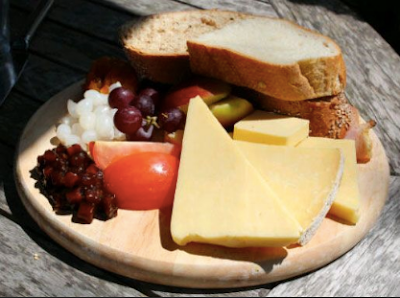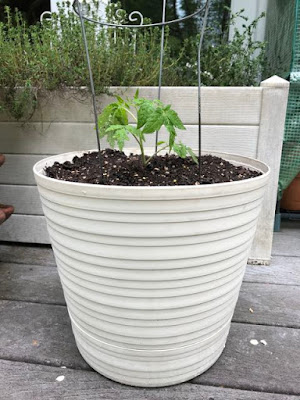I was out near our woods, gathering sticks to make another bunny fence when I spied these tiny berries beginning to develop. Over the years, I've told you about many of the fruits that I grow in our suburban garden. Perhaps you've guessed -- I like variety! There's a fruit that I grow that's not terribly well-known in American gardens -- black currant. Black currant, however, is well-known in northern Europe, Scandinavia, the UK, Asia, and New Zealand.
For most of the 20th century, fruiting currants were banned in the US, due to a fungus which can devastate white pines, a common logging wood. In the last couple of decades of the 20th century (with the advent of successful treatments for this fungus), the federal ban was lifted for many states, including Washington state. This is great for me, as my cool maritime region is perfect for currants, with its damp and acid soil.
In studying what would grow in my partially shady yard and would have food value, currants and their cousins gooseberries sounded appealing. Prior to this garden, I had only tried the dried Zante currants, which by the way are a grape and not a currant. About 20 years ago, I ordered 1 black and 1 red currant plant. Both red and black currants will spread by fallen seeds in overripe berries. But I also found they were incredibly easy to propagate from cuttings. I simply cut off about a foot from a cane and stuck it in soil in a shady spot. Within a year the cuttings had fully rooted.
The red currants are more prolific in my yard, but I appreciate the black currants a bit more for their nutritional value and delightful flavor. High in vitamin C and polyphenols, these tiny black berries pack a punch. During WWII in England, imports of oranges were blocked by the enemy. The British turned to alternative and native sources of vitamin C, one being black currants. The juice from the berries can be made into a high-C syrup to be taken daily during cold and flu season. The juice is also the basis for currant liquors. The berries each have many seeds, so I tend to use them in places where seeds won't be as apparent, such as in tea, smoothies, fruit sauces, jelly, and juices.
I also use the leaves from the black currant plants. (Interesting, the red currant leaves have no distinctive flavor.) The aroma and flavor of the black currant leaf is fresh, herbal, and fruity. The leaves are high in vitamin C and GLA (gamma-linolenic acid) which is said to boost the immune system.
This may surprise you -- black currant has been a somewhat popular fragrance for candles and air fresheners in recent years. My son and daughter-in-law gave me a black currant candle a year ago and I was quite pleased at how much it smelled like fresh black currant leaves. As I said before, black currants have a nice, fresh fragrance -- something appealing in a candle or air freshener.
Finding the plants doing well this year, I feel even more motivated to care for these canes and perhaps take a few more cuttings for expanding my harvest of future berries.






































